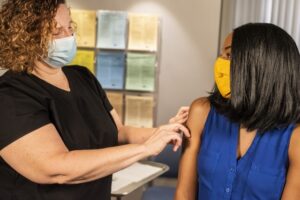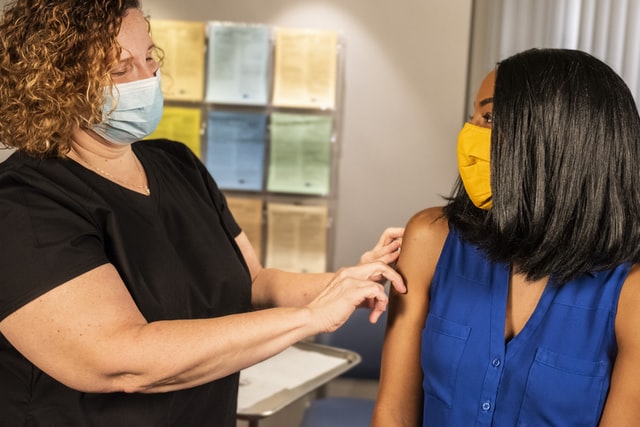Ontario, third dose of vaccine to all over 18s as early as Monday after three months from the second one

TORONTO – There is no more time to waste, at least more than that lost so far between hesitations and non-decisions. The provincial government announced today that the third dose of the vaccine will be open to all citizens aged 18 and over from Monday. Not only that: it will be possible to do it three months (and no longer six) from the second one. An acceleration first hoped for and then supported by the Ontario Science Table which just today returned to call for rapid measures to curb the surge in cases due, in all probability, to the Omicron variant, much more infectious than the Delta. But let’s go in order.
Today morning a government press conference led by Doug Ford was called for the early afternoon. Prior to meeting with reporters, Ontario Premier met with Ontario Chief Medical Officer of Health Kevin Moore and Ontario Science Table scientists to take stock and agree on decisions to be made and announced to the population.
The meeting was supposed to last half an hour, but lasted for over three hours, so much so that it was necessary to postpone the conference twice. And all this while the increasingly disturbing forecasts of the Ontario Science Table were bouncing around in the media, one in particular: the province could register up to 10,000 new cases of Covid-19 per day by New Year and will probably have to reintroduce some capacity limits to protect the health system, as reported by Dr. Peter Juni, scientific director of the Table, just today morning during an interview with Colin D’Mello on CTV News Toronto.
The new threat, Juni said, is called Omicron: a report from Public Health Ontario estimates that each case of the Covid-19 variant identified in Ontario between November 28 and December 9 infected 7.7 times the number of people in Ontario. each case involving the previously dominant Delta variant. The authors of the report therefore state that Ontario will have to “rapidly implement public health responses to contain the rapid spread of Omicron” although they do not provide specific recommendations.
In his interview with CTV News Toronto, Juni said that certain restrictions such as venue capacity limits will need to be reintroduced for many locations and the launch of third dose administrations will need to be accelerated significantly, in light of the fact that individuals who they took the second dose six months ago now have minimal protection from infection. “It’s not going back to square one with public health measures, this is really important. We learned what high risk is. But, unfortunately for restaurateurs, restaurants are at high risk. Unfortunately for people throwing a Christmas party, this is a high risk” he said. “It’s about capacity constraints. Like in sports arenas: 20,000 people is probably too many. We need fewer people and all of them in disguise”.
All themes that probably were at the center of the long meeting between Prime Minister Ford and the scientists dealing with the pandemic.
Finally, around 4pm, hours after the first time set for the press conference, Ford and Moore appeared in front of the cameras and the premier began by saying that there is “a new enemy, Omicron, which is a variant of the Covid-19 is particularly contagious and is becoming the dominant one in Ontario. Everyone at this point has a role to play” he said, before announcing the turning point: “From Monday, every person over the age of 18 will be able to get the third dose, three months after the second one”. In fact, in light of the emergency, the time between the second dose and the “booster” was halved, which until today was six months. Hoping it will work to keep a rapidly worsening fourth wave of pandemic under control.
Then, Ford announced a “new” restriction: the capacity of indoor facilities that can accommodate more than 1,000 people will be limited to 50% starting December 18. The measure covers large sports, entertainment venues, concert rooms, theaters, cinemas, event and meeting spaces, museums, historic sites, botanical gardens, casinos, bingo halls and festivals.



